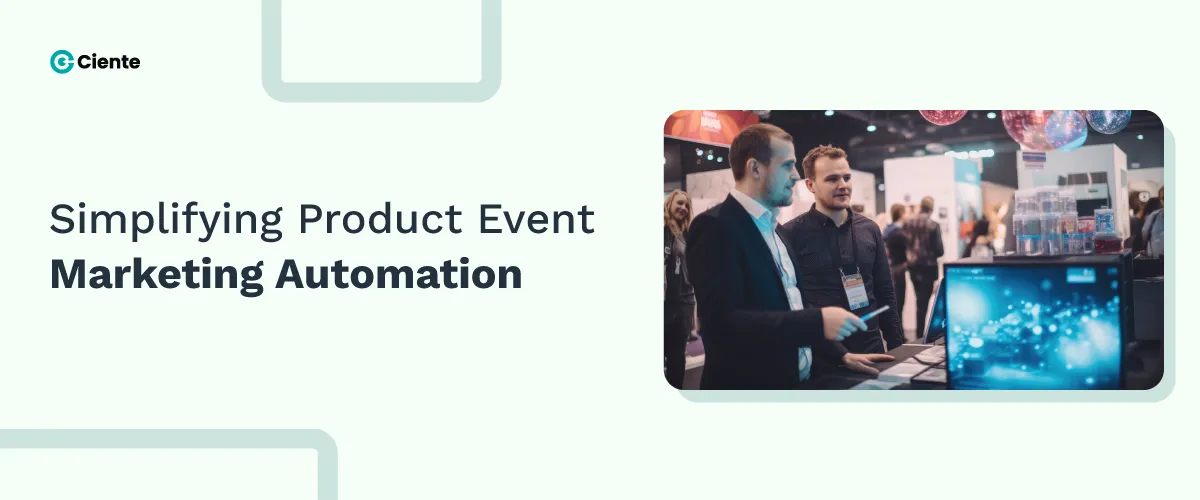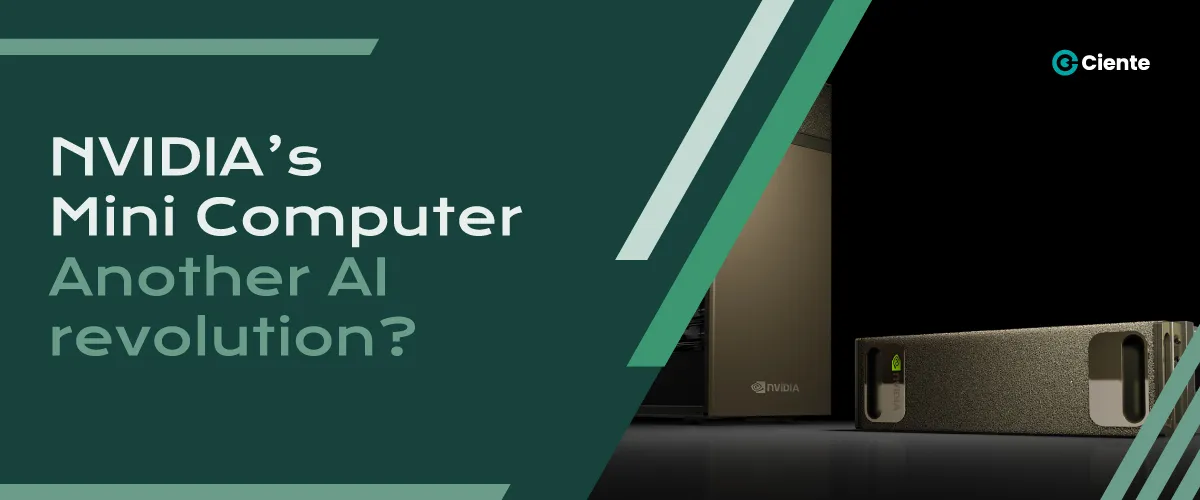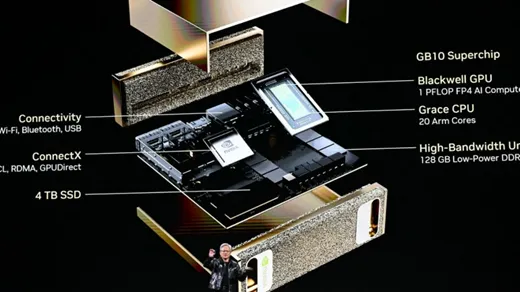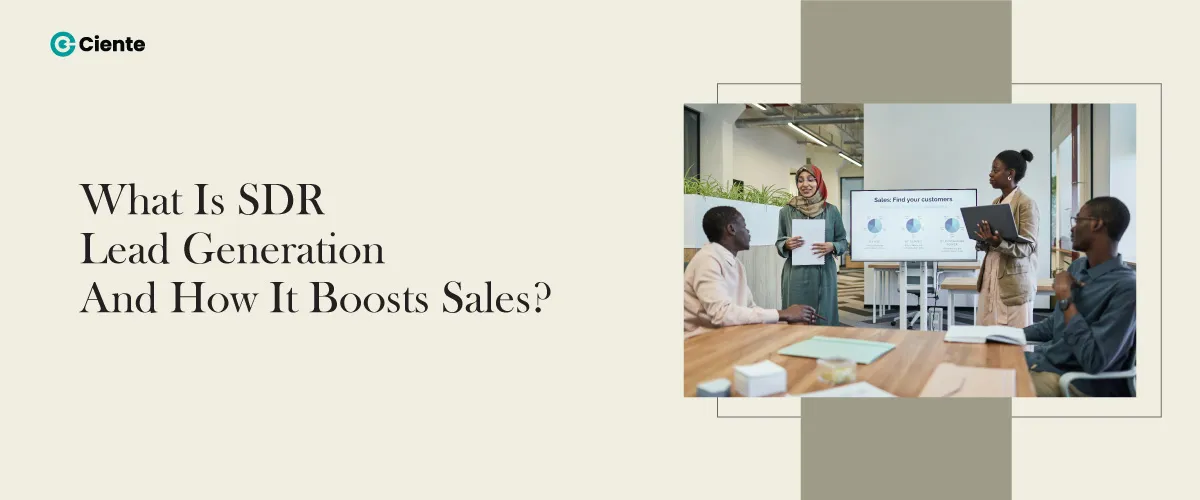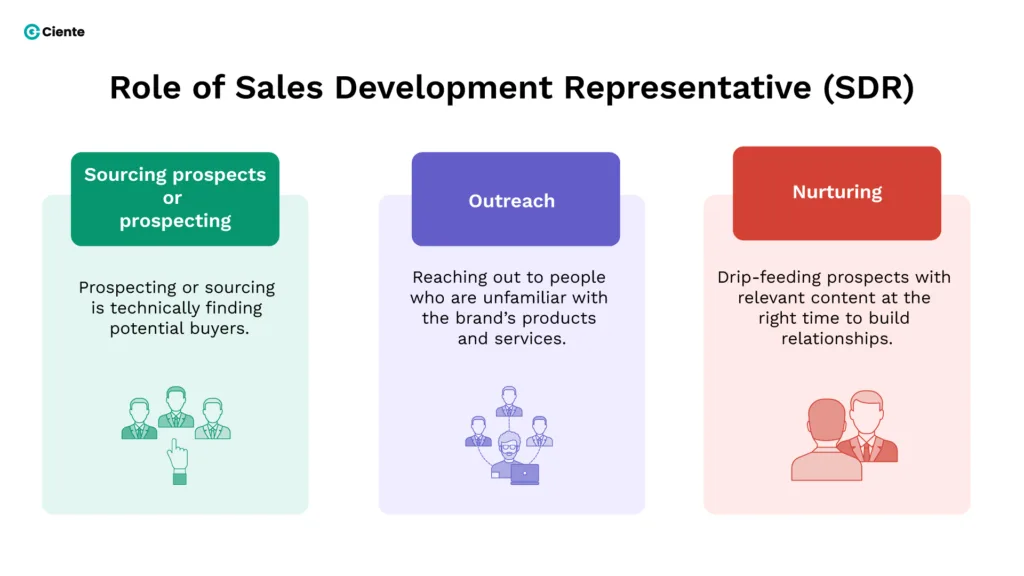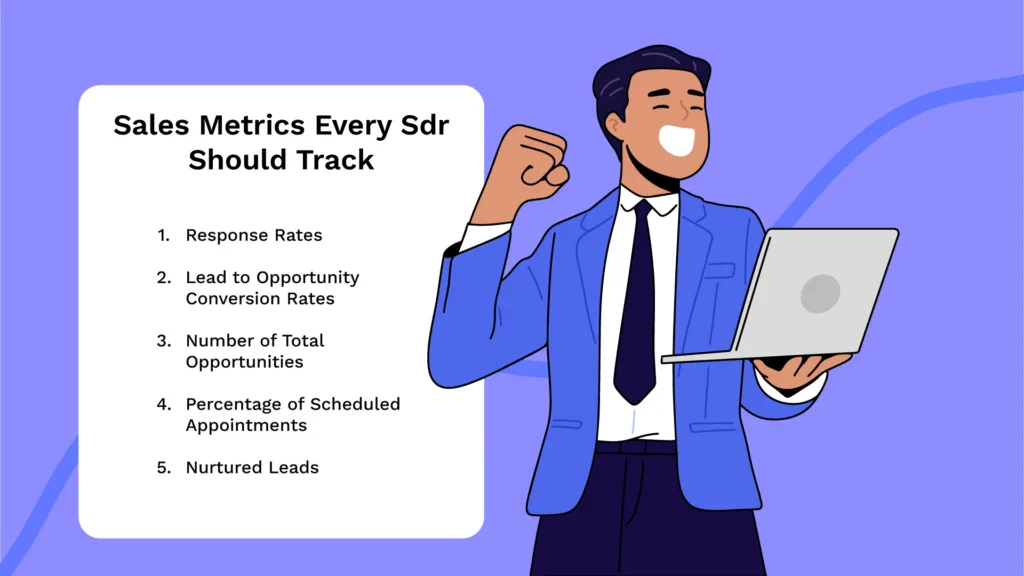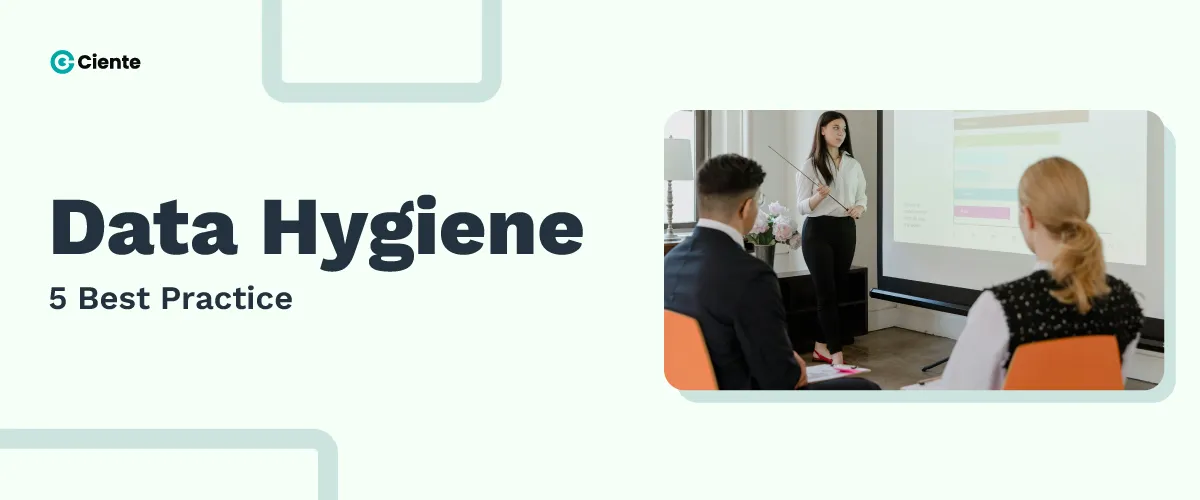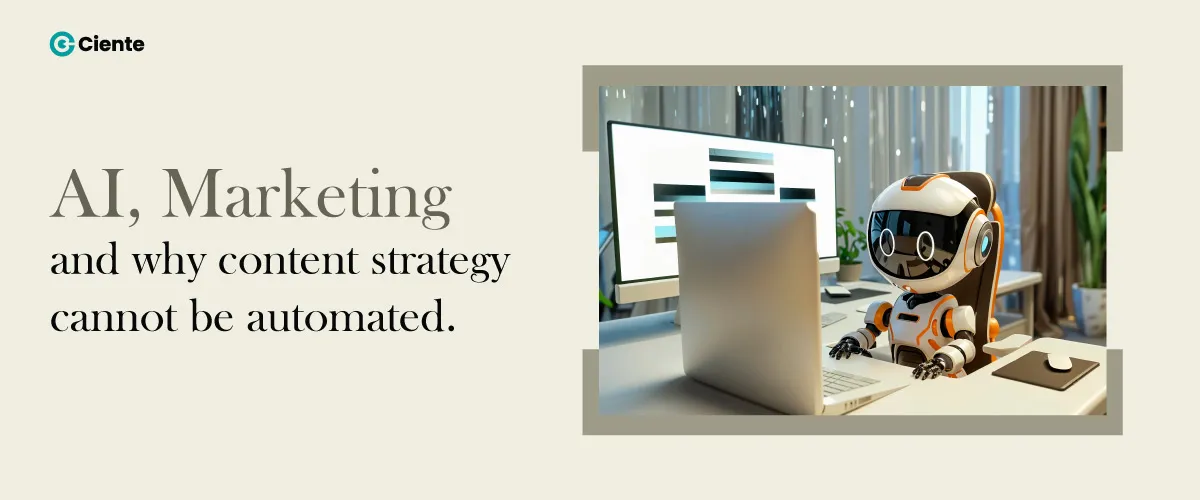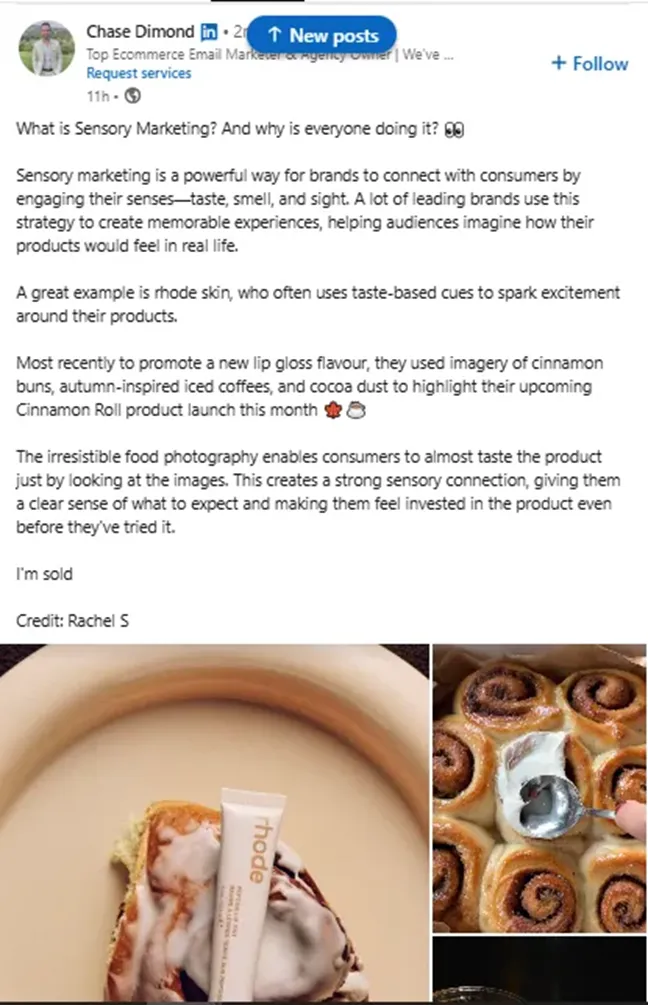Simplifying Product Event Marketing Automation
Product events are tedious and difficult to manage. Can product event marketing automation simplify the process and negate the need for multiple hands?
Time and content are the components threading together brand and consumers. The right content delivered to the audience at the right time holds more impact than deemed possible. For example, when we have a time-sensitive query, all we do is input and receive the solution in a single search.
Marketing is majorly leveraging these two factors with a streamlined purpose. And it quite rightly works. In a market where competition is stiff and has minimal opportunities, leading the race is a dream. But businesses continuously churn out modernized means to engage the audience.
As the proverb goes – necessity is the mother of invention. And so, brands harness standard methodologies in their unique but convenient ways.
With the influx of marketing automation tools revolutionizing the market, businesses are seeking out convenient ways to minimize errors. At the forefront of this transformation is the introduction of AI, machine learning, and NLP, which has made automation perform tasks better.
Consumer behavior has always remained dynamic, often influenced by psychological, market, and other factors. To engage prospective buyers and maximize profitability, brands integrate modern tech with traditional methods, improving automation processes.
This resulted in a shift in the basis of B2B and B2C campaigns, influencing the marketing landscape to an extent. The general objective is driving value by concretizing positive brand perception and generating revenue. Focusing on customer preferences is a huge element here. This professional relationship goes beyond selling services and focuses on offering real value to the clients.
There is no single handbook for mapping successful marketing strategies. But optimizing one’s processes, from operations to management, lends a helping hand. Marketing automation has ensured that the focus is on priority tasks rather than routine ones.
Instead of offering only convenience, it becomes a means of betterment.
In the age of fast-paced digital marketing, it’s tough to stand out, especially when marketers leverage the same software and techniques. So, where should the focus be?
Take promotional events, product launches, or demos, for example. They are not difficult to organize and practically follow the same format. But something’s got to give. The essence of the event is to target each attendee and offer them personalized interactive experiences.
Marketing automation leveraged for product events construes a simple roadmap. It allows organizers to track attendee engagement and behavior before, during, and after the event, enabling them to measure its performance.
Why has marketing automation become vital?
It’s straightforward. It frees up resources and time to prioritize critical tasks. Through this, marketing and sales teams are able to enhance lead-generation strategies and foster positive customer experiences. Moreover, it’s quite a cost-effective solution to manage repetitive tasks.
While illustrating how marketers are driving value, marketing automation has helped reduce as much friction as possible. While automated processes focus on daily manual tasks, employees can personalize and have time to construct a strong relationship with their prospects that could possibly convert into high-value customers.
It’s not easy juggling different tasks. Especially sending numerous email reminders and SMSs to prospects once they demonstrate any form of engagement across the brand website or outreach content. It can also be tedious to send emails to multiple prospects who interact with a brand’s offerings.
Hence, the reason why automation is a crucial player in email marketing. It’s all about increasing as well as simplifying a brand’s engagement across the market. Marketing automation is the appropriate solution to manage these. For example, when a potential buyer subscribes to the brand’s newsletter, they might get an automated email regarding an event regarding the product/service(s) offered by the said brand.
Technically, marketing automation enables marketers to send automated responses to specific triggers. This is a streamlined methodology for sending multiple reminders for significant events. Automated outreach messages are popular and used by numerous organizations to simplify and enhance prospect engagement.
In other words, it’s quite the virtual support system for marketers. Not only does product event marketing automation make their jobs efficient, but also enhances customer interaction.
What is product event marketing automation used for?
Generally? Promotional events. By leveraging automation, marketing campaigns have become seamless, streamlining communication with potential buyers. Isn’t this at the crux of business deals – ensure a healthy and positive bridge with prospective customers?
Developing a relationship with prospects requires consistent engagement and nurturing. It’s not a one-time interaction. If the customers don’t feel a sense of belonging amidst the plethora of the brand’s loyal customers, they might churn or drop off beforehand.
However, involving them in product events such as trade shows and webinars can showcase their importance and remind them of the brand. Marketing automation is certainly a useful tool here, as it targets multiple social channels for advertisement by increasing visibility.
Marketing automation software assists brands in designing targeted marketing campaigns to elevate their reach effectively. Emails and messages are tailored according to the various audience segments to ensure the right content is delivered at a specific time.
Product event marketing automation also considers administration duties along with maximizing the number of attendees, collating guest information, and offering insights based on the aforementioned.
The utilization of marketing automation in product events is extensive. The end requirement is a smooth and streamlined event experience for organizers and participants alike.
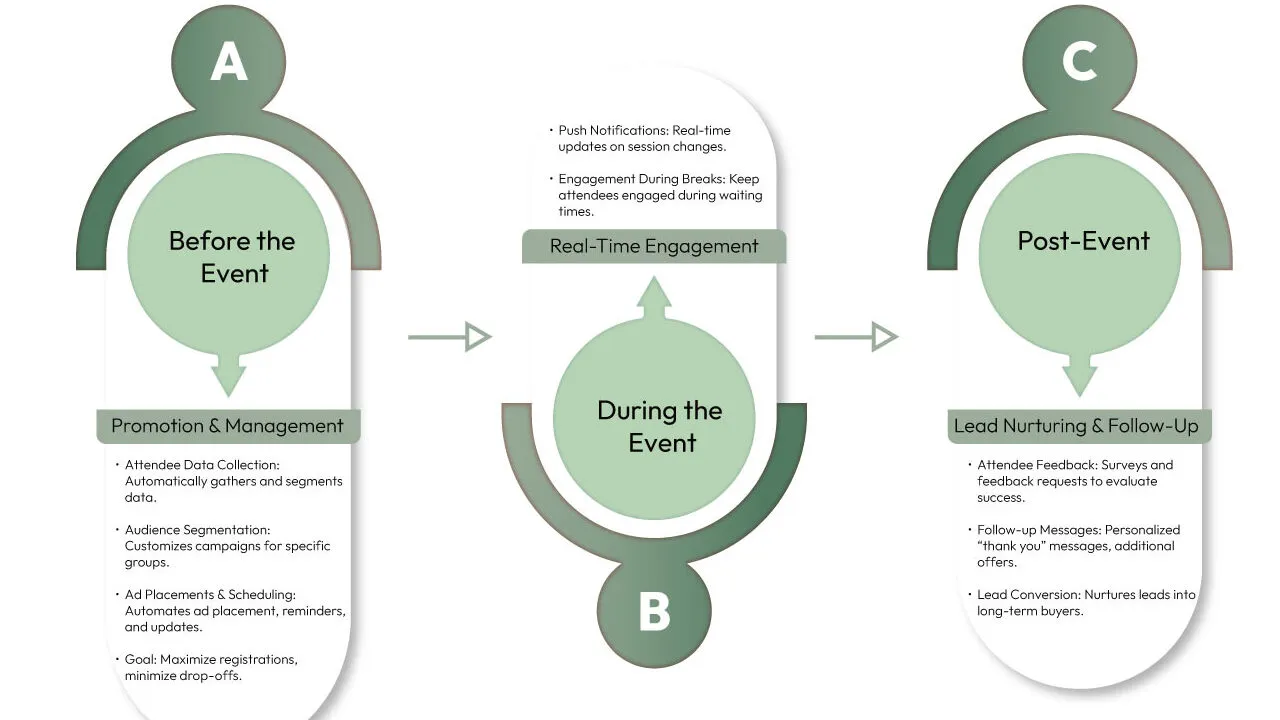
Before the event:
This stage critically involves promotion and management.
During the promotional phase, businesses leverage automation to initially collect attendee data, segment audiences, focus on ad placements, and consequently schedule posts relating to registrations, confirmations, event date/time reminders, and any last-minute check-ins.
The gathered information can be used later to track campaign performance and highlight the areas of maximum interest to improve future events.
At this stage, most automated processes focus on increasing the number of registrations and keeping them from dropping off. Automation software in the pre-event stage quickens the registration processes and keeps them updated without additional administrative involvement.
During the event:
Using automation during the event/sessions can seamlessly facilitate real-time connections. The goal here is to keep the attendees engaged and informed. Most wait times between sessions can be tedious and unnecessarily long. However, continuously sending push notifications and updates can help them know vital information concerning delays or cancellations.
Additionally, communicating consistently with the audience will keep them engaged even during breaks.
Post-event:
After the event, one of the major tasks is mapping the attendee experience to gauge its performance or success. This comprises follow-ups, “thank you for attending” messages, feedback surveys, and customized offers to further engage with potential clients.
Automation software at this stage after the event is necessary to nurture leads’ interests and convert them into long-term buyers.
How does product event marketing automation ensure these tasks are proactively carried out?
The automated processes work through a trigger or prompt that activates a response to a specific prospect interaction. For example, if an attendee registers for the event or signs up for the brand’s newsletter, the system will periodically send them promotional offers relating to their preferences.
Constructing a seamless and interactive product event for attendees is vital. So, marketing implements automated processes cued with software platforms, integrating various marketing channels. These platforms often initiate multiple features:
Product Events & Email Marketing Automation:
Email marketing is a significant tool in ensuring a packed house for product events, whether virtual or real. However, managing email campaigns alongside event planning can be daunting.
This is where marketing automation platforms such as Zapier become your savior. It frees up much-needed time while ensuring the brand messages reach the right audiences. One of the biggest advantages of email marketing for product events is its direct line to the attendees – whether to create excitement or share session details.
But this is not the only benefit. Automating email marketing ensures that the attendees are hooked even when the organizers are off the clock.
Email marketing automation fosters a successful product event by focusing on the following:
- Personalized and resonating messages that focus on targeted communication by segmenting the attendees according to their demographic, interests, and aforementioned preferences.
- Exclusive content through scheduled reminders and session updates to keep the attendees informed as well as engaged.
- Automated emails with event sneak peeks can generate interest and boost registrations. The email content can also aim towards answering common queries and encourage newsletter sign-ups.
- Are your attendees satisfied? Include review sections or feedback scrolls in thank-you emails to illustrate that the brand seeks to improve itself.
Now, the simple question is – how does email marketing automation for product events work?
It’s straightforward.
Primarily, the focus is curating a solid strategy. Using the data collected beforehand during the pre-event promotional stage can help build a specific framework. Developing this will assist in selecting the appropriate platforms with flexible integration capabilities.
An application such as Zapier helps the brand connect the event platform with the email marketing software. This will now enable triggers on specific actions based on the event keyed in on the chosen event platform.
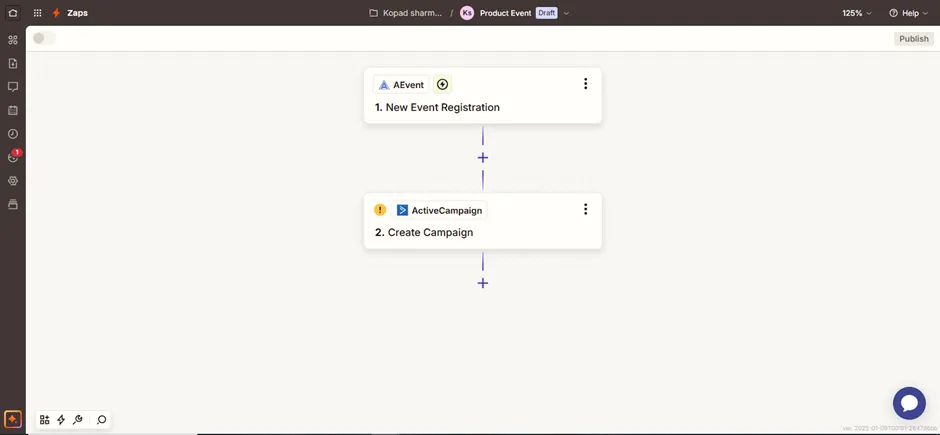
For example, AEvent is the event platform, and ActiveCampaign is the email marketing software.
After signing up on Zapier, create a new automated workflow or a new Zap and connect both accounts, as shown in the above image. AEvent is the trigger app here, whereas ActiveCampaign is the action app. A new attendee registration will trigger an action, i.e., create a new campaign.
Every new email campaign created requires you to input the contact list. Now, it’s time to create email design and content and choose the segment of contacts. While ActiveCampaign also hosts a drag-and-drop feature to make choosing emails easier, remember inputting the contact list will help effectively segment the contacts based on diverse preferences.
Automated email marketing software utilizes autoresponders – emails triggered due to the user’s actions. All you have to do is outline an email sequence after deciding on a robust copy.
While marketers know how to curate a personalized email copy, what about email sequencing? Mapping it out will highlight who the specific email copies are sent to and when.
To consider:
- Registration confirmation and calendar invite should be forwarded immediately after the registration form is filled.
- Specific details regarding the session speakers can be sent a week before the event, especially their background and topics they might cover.
- The exact schedule and reminders regarding the benefits of attending the event could be sequenced a day prior.
- One or two hours before, a critical reminder can be sent with the venue or sitting details, online links, start time, duration, Q&A session, etc.
- Checking in on the attendees and their experiences immediately after can be useful as the content might be fresh in their memories. Sending review and feedback forms can help pinpoint the concern for their experience.
- After a few days, send key takeaways and summaries of all the sessions along with resources for no-shows.
- Lastly, after a week and depending on the engagement behavior of the attendees, sending email copies with customized offers can help spark their memory.
Using email marketing automation drastically improves attendee engagement and establishes trust. Diverse and personalized email sequences guide users from A to B, i.e., the overall event lifecycle.
Social Media Automation
With social media gaining momentum, leveraging the platforms is quickly becoming a B2B norm. But managing it can be quite a grueling task. It’s more than merely curating content and being an influencer.
Posting regularly, elevating engagement, and monitoring different social media channels should be at the forefront. Curating an engaging social media presence is every business’ goal.
Social media automation tools lend a helping hand here. They allow brands to automate social media tasks that are quite repetitive, such as engaging with posts.
Automated actions enable an active and interactive presence, which is fruitful for product events.
How is social media automation beneficial for product events?
Social media automation can assist in one of the most significant tasks in the promotional stage of a product event – scheduling posts. It helps organizers map out the most ideal time to post and then automatically publishes it when the audience is most likely to engage with it.
Automation to optimize and streamline a content calendar works wonders for planning concrete social media campaigns. Several social media automation applications, such as Hootsuite, help analyze thousands of social media posts and highlight the optimal time – this considers all the different social platforms.
Which other factors have to be kept in mind? Content management and appealing to the audience’s tastes. While social media automation tools can help do the former, curating content requires a human touch. However, automating other tasks such as bid adjustments, ad scheduling, and targeting audiences can open up a window to focus on creative pursuits.
Taking note of these will foster content visibility along with attendee engagement. Most product events can leverage social media ads to promote themselves.
And this can elevate the reach, given the hype around social media networks. Ad campaigns are also difficult to manage, but using the right social media automation tool can be a huge savior.
When the platform is leveraged effectively, one can use ad performance analytics and reports to gauge attendee registrations. Measuring ad performance data doesn’t merely impact campaign results but also influences attendee registration.
Further, social media automation also has a way to enhance user experience. What if, after seeing a product event ad, the prospect has queries? Social media platforms may implement customer service bots, such as Botsify or Flow XO, to place virtual agents who cater to responses regarding the company and its offerings on social media.
A/B Testing in Product Event Marketing Automation
Additionally, marketing automation can help optimize the brand’s A/B testing methods for the product event. This is not isolated from email marketing and social media automation but works synergistically.
The concept behind A/B testing is known by every marketer and is quite simple. And in the case of product events, it can prove to be a huge asset in regard to marketing emails and social posts.
Small businesses that wish to organize product events might not have a huge marketing budget like Google or Apple. This is where A/B testing can help streamline the in-hand marketing channels and improve their workability.
The most beneficial aspect here is that this test can be run from fonts to subject lines to the placement of the sign-up form or button. What if its positioning is deterring potential attendees from signing up?
Before the event, the marketing team can test different placements with maximum visibility and click rates.
There’s so much that can be evaluated in reference to marketing campaigns for product events – from email campaigns to paid ads to social media content.
CRM Marketing Automation
Automating CRM systems enables one to efficiently manage and personalize marketing campaigns. For product events, CRM automation will allow businesses to leverage attendee data for targeted communication and lead nurturing even after the event lifecycle.
The organizers can identify high-value leads to nurture them through the sales funnel by tracking different attendee engagement and interaction levels at the event.
For product events, CRM systems help:
- Directly Registering attendees helps store their data and facilitates seamless segmentation.
- Follow attendee activity, i.e., session attendance and networking behavior.
- Send personalized email post-event.
In simple marketing terms, CRM marketing automation for product events can boost attendance, improve lead generation strategies, elevate attendee experience, and offer data-driven insights into attendee behavior.
Benefits of Product Event Marketing Automation
Leveraging product event marketing automation can yield several benefits. Mentioned below are some of the compelling ones.
Integrating the afore-discussed automation processes can work wonders to elevate campaigns for product events. But this is not the end of the road. It carries significant benefits for the marketing and sales teams as well.
But in what ways?
- Prompt engagement for positive interaction and boosted conversion rates
- Outreach automation streamlines communication and helps nurture prospect relationships
- Tailored communication sequences for marketing and sales to align their needs with the prospects
- Manage different event marketing campaigns by curating outlines for engaging agendas and implementing multi-channel promotions
Even if the benefits of product event marketing automation are crucial for automating event campaigns, is it as easy as it sounds? Not quite.
How do we harness the maximum potential of marketing automation to revamp product events?
The brands have to keep particular attributes in mind:
- Selecting the appropriate software
- Develop a strategy with concrete workflows
- Consider the frequency of attendee communication
- Appoint admin for automated workflows to manage technical tasks
- Filter guest and attendee lists
- Leverage AI chatbot software for improved support
- Segment audiences for targeted invitations and outreach content
- Evaluate promotion strategies
- Track event performance using automated reports
- Test the workflows across multiple applications
In product event marketing automation, remember precision is the steering wheel.
Based on the goals of the marketing campaigns for an event, the triggers should be as specific as possible. The automated processes have to take into account every mentioned step in the customer journey and incorporate it.
Once it’s clear how the triggers and the specific stages of the customer lifecycle are related, marketing and sales will deem it effortless to align their strategies with overall expectations. To streamline marketing automation across channels, applications, such as Zapier, leverage webhooks to help brands ensure no valuable leads slip through the cracks.
This remains the promise of automation when used correctly.
While AI has drastically transformed marketing and sales campaigns, the integration of modern tech with automation will only improve its effectiveness. Transforming the shape of marketing in the future that is yet to come.

